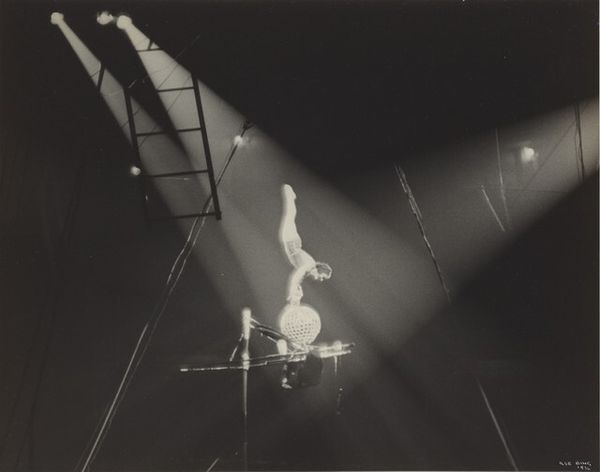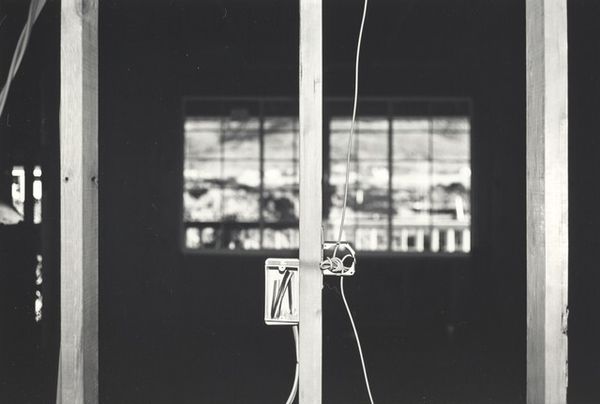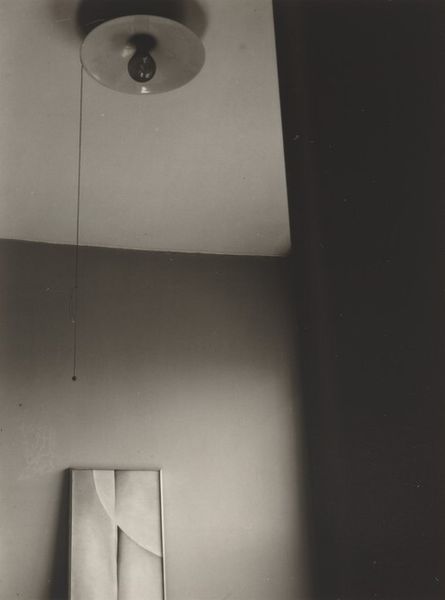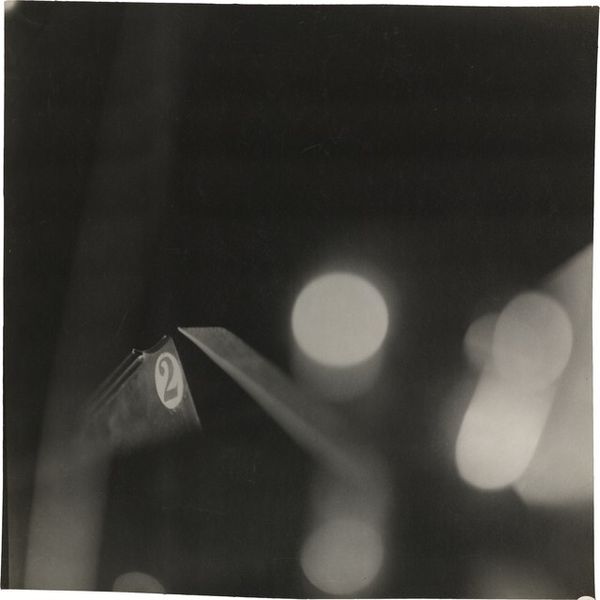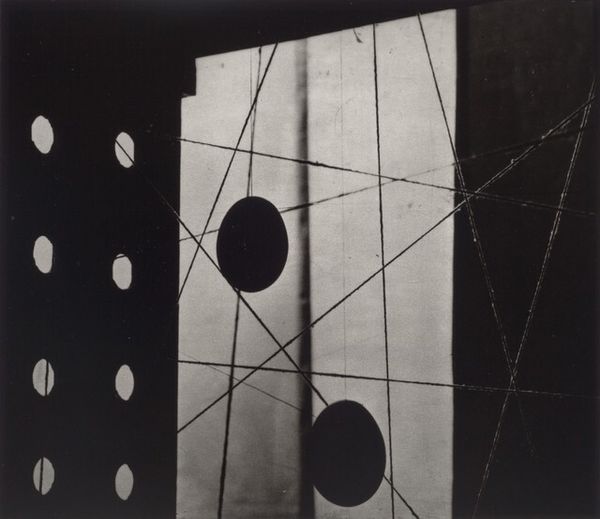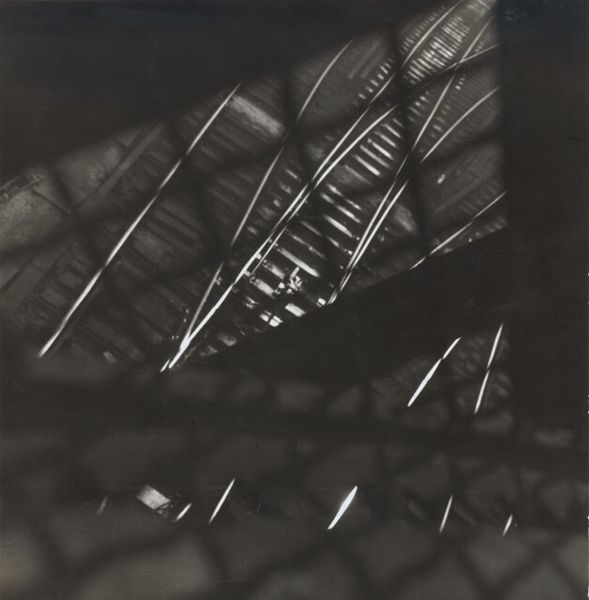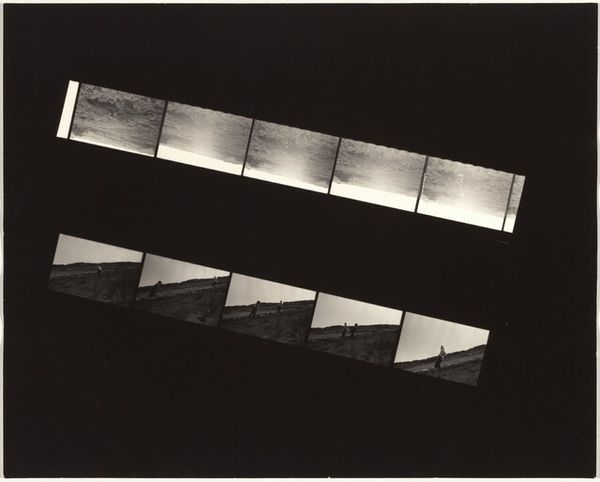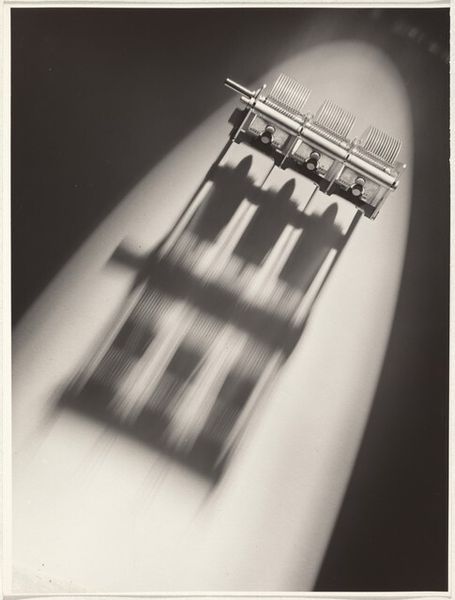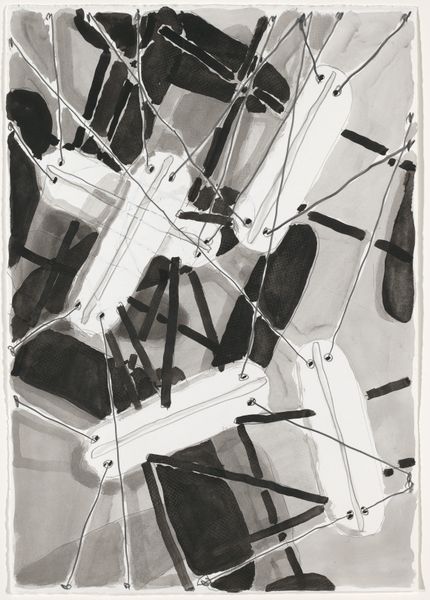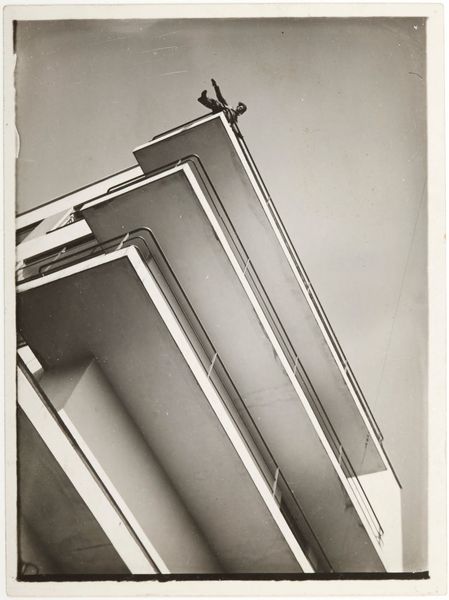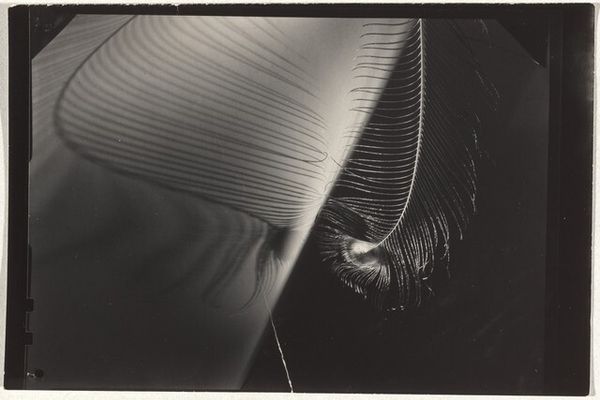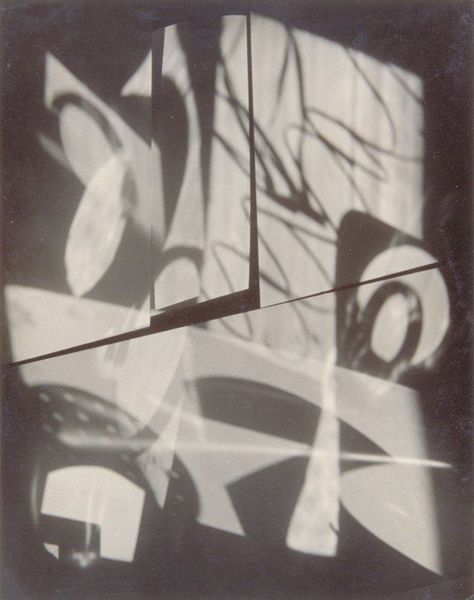
photography
#
portrait
#
photography
#
monochrome
Copyright: Brassai,Fair Use
Curator: This monochrome photograph, “Au cirque Medrano,” was captured by Brassai in 1932. Editor: The stark contrast grabs you immediately. It’s unsettling, almost like peering into some liminal space with figures suspended in darkness. Curator: Liminal is a great word for it. Brassai was fascinated by Parisian nightlife, especially scenes involving performers. What this image reflects to me is the culture industry, how bodies become commodities and tools within systems of mass entertainment. The labor involved… Editor: That’s a fair reading, but my eye goes straight to the dramatic composition. The spotlights create a stark, geometric pattern above. And the way the aerialists are framed in those square trapezes mimics, enhances the shapes throughout. Curator: For sure. Consider also, however, the means by which this spectacle is rendered for the masses. Photography became widely accessible at this time, think about how technology made circuses such as this available as pictures reproduced over and over for broader consumption. The working-class spectacle meets mass reproducibility… Editor: I don’t discount the social aspect, but isn’t it equally vital to discuss what is there visually? Those perfectly tensed muscles of the performers? It’s almost sculptural, with light sculpting form against shadow. Curator: But this artistry isn’t separate from the larger mechanisms through which the bodies and images of those bodies get consumed! These performers likely had no say in how their labor was recorded. Editor: A valid point, perhaps. Yet look how Brassai used light and shadow. Look, that is, beyond the economics, beyond pure material production. We must notice that by emphasizing specific tonal relationships, this image evokes wonder, terror, awe, that transcend the specific realities and allow to make sense of them Curator: I hear you. Looking back, my emphasis might seem reductionist. The magic in these aesthetic properties reminds us of lived moments shaped by the social currents of the 1930s. Editor: Agreed, finding that synthesis between social production and expressive capacity reveals what Brassai so brilliantly captures.
Comments
No comments
Be the first to comment and join the conversation on the ultimate creative platform.
